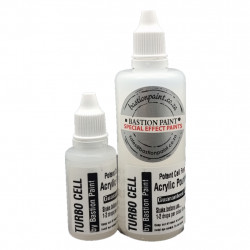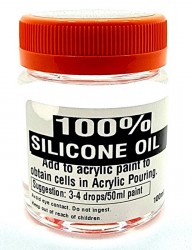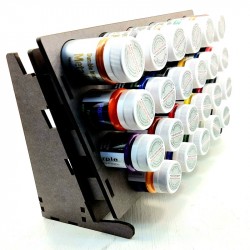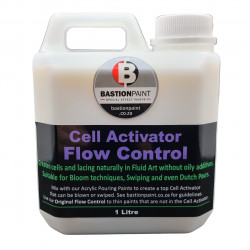Acrylic Pouring Paints
Availability:
- Durable, medium body acrylics for Fluid Art.
- Mix with our Flow Control Pouring Mediums for all techniques including Traditional, Bloom, Cloud and Pearl techniques.
- Lightfast strong colours. Low VOC.
Acrylic Pouring Paints
- Non-fading colours with UV resistant, lightfast pigments and binders that are suitable for interior and exterior applications. Archival quality paints. (Scroll down to find information on the pigments that we use.)
- Flexible, pure acrylic paints with a good pigment loading that resist cracking in fluid art.
- All colours in the range now have the same viscosity (thickness) so the same mixing ratio will give the same result in all of them. All are thick enough for modern techniques such as blooms and cloud pours that require thicker starting paints.
- All our colours are now very stable during storage (only minor stirring is required). This was a significant improvement made during 2023.
1. Traditional Pouring Techniques using our Original Flow Control, Acrylic Pouring Paints and an oily Cell Former
2. Bloom Techniques, Swipes and Dutch Pours using our Cell Activator Flow Control, Original Flow Control and Acrylic Pouring Paints without oily additives or residues
In the Sheleeart Bloom technique a CA is prepared by mixing Australian Floetrol with Amsterdam Paint. A polyurethane varnish and clear base are blended to make a pouring medium. The required paints and mediums are expensive and often difficult to obtain.
Now you can obtain prolific cell formation and beautiful lacing using only Bastion Paint products. This is a superb development by Bastion Paint that has raised the bar in acrylic pouring art. All our products required for these techniques have been formulated to work together.
The top CA is prepared by mixing one or two of our Acrylic Pouring Paints with our Cell Activator Flow Control. A CA made this same way can also be used as a top paint layer in swipes and even in Dutch pours.
All other Acrylic Pouring Paints used in the pour are prepared by mixing them with our Original Flow Control. (For even more special effects, you can also use our Bright Neon Paints mixed with our Original Flow Control and our Metallic Paints mixed with our Metallic Paint Flow Control.)
Please see our product "Cell Activator Flow Control" for details regarding mixing and methods.
3. Cloud, Pearl and FX Techniques using our Cloud & Pearl Flow Control, Original Flow Control and Acrylic Pouring Paints without oily additives or residues
How to prevent crazing
About the pigments we use in this paint range
Artists love to know what pigments are used in their paints. They generally research their pigments and know which are lightfast and which are not. They also know pigment colours and how they behave when mixed with other colours. Some of our Acrylic Pouring Paints are pure pigment paints while others are manufactured with pigment blends. We have selected only lightfast pigments that are suitable for archival quality art. A PDF called "Pigment Table" can be downloaded from this web page and it details the pigments we use in every colour. Simply by Googling the Colour Index number you will be able to read about each of the pigments we use.
- Cadmium based pigments are well known in many bright art paint colours including reds and yellows. We don't use any cadmium-based pigments but our bismuth vanadate (lemon yellow) and diketo-pyrrolo pyrrole red and orange pigments are excellent, far more environmentally friendly substitutes.
- All our oxide colours are earthy. Some paint manufactures call the Red Oxide colour Venetian Red and the Yellow Oxide colour Yellow Ochre. Chrome Green Oxide is a dull green and an extremely natural colour well suited to African landscape scenes.
- We only have two colours that tend towards being pastel shades: Cerise Pink and Blaze Orange.
- Quinacridone Maroon is deeper and bluer than Quinacridone Magenta which has a brighter hue.
- Ultramarine Blue is a bright blue with a red undertone while Phthalo Blue is a little less bright and has a green undertone.
- Ultramarine Violet is a bright violet while Dioxazine Violet has a deep, powerful violet colour.
Video Shorts (click to watch on YouTube)
All videos made by Traci Scerri using exclusively Bastion Paint products. Many of the pours contain our Metallic Paints as well as our Acrylic Pouring Paints
Type |
|
| Type | |
General |
|
| Colour |
Titanium White
Carbon Black
Charcoal Grey (Hue)
Yellow Oxide
Azo Yellow
Bismuth Lemon Yellow
Red Oxide
Pyrrol Red
Cerise Pink
Ultramarine Blue
Phthalo Blue
Turquoise (Hue)
Chrome Green Oxide
Phthalo Green
Bright Lime Green
Orange Oxide
Blaze Orange
Pyrrol Orange
Red-Orange
Quinacridone Magenta
Quinacridone Maroon
Purple
Ultramarine Violet
Dioxazine Deep Violet
Dark Brown
Titanium White for Marbling
Maroon Oxide (for M&P)
Violet (Hue) for Marbling
|
| Unit Size |
100ml
110ml
300ml
350ml
1 Litre
5 Litre
20 Litre
|
Cup Type |
|
| Cup Type | |
Unit Size |
|
| Unit Size | |
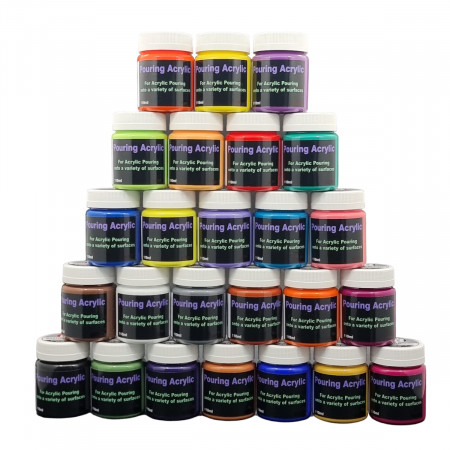













































 Colour Chart
Colour Chart




